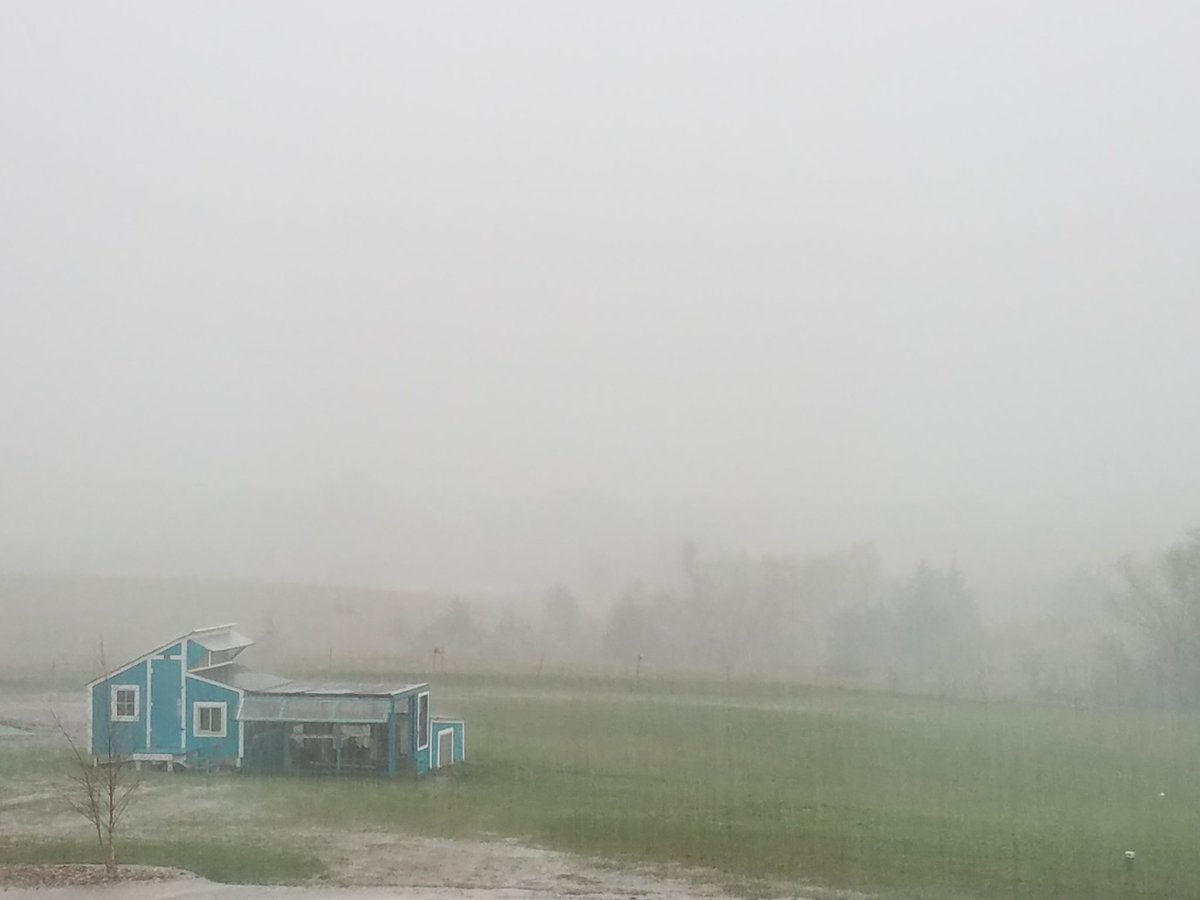Okay, it rained a lot. Mostly the rate of just shy of one inch per hour, but peaking at almost four inches per hour (2 1/2 inches during a forty-minute period).
The run got wet. Well, half of it did. You'll recall that we extended the run; the bottom of the framing connecting the two halves acted as a small dam.
Most of the chickens were smart enough to go to the dry side of the run.
Most.
— WthrLady (@WthrLdy) April 14, 2017The problem is that, while the Oo-de-lally Egghouse is above the pasture, it's still downhill from the other half of our property. When the rain falls on our land, it goes downhill (as water is wont to do), and much of it finds its way to the coop and run. The coop is on stilts; the run isn't. An inch per hour of rainfall is a little over 27,000 gallons per hour per acre. The Oo-de-lally sits below three acres. Not all of the runoff will find its way to the run, but enough did. And the rain kept coming. As Andy the rooster was deciding which hen would join him on the ark, Caryl and the Boy bailed water, getting 8" deep water down to 5" and then drilled a few drain holes in the run's frame to let the water out. Then they dug an impromptu trench to divert some of the water coming down the hill. In the height of a thunderstorm. And in their pajamas with bright yellow slogger boots.
(Where was I? Well, it being a Friday, I was at work, quite dry.)
A couple of days later, once everything was dry again, it was time to put in a more permanent water management system: a French drain. The French drain wasn't invented in France, but is named after its inventor, Henry French. It's basically a permeable pipe surrounded by gravel to allow water (but nothing solid) to enter the pipe and flow away. Shortly after we moved to Dunrovin Station, we found terra cotta "weeping tile" pipe segments that were probably part of a French drain at the bottom of the pasture and installed around the turn of the 19th/20th Century, to keep the ground from getting too waterlogged for agricultural use. For our French drain, we used perforated polypropylene flex pipe with a "sock" to act as a filter to keep out solids.
 |
| The supervision crew helping to evict the trench's residents. |
 |
| Playing "X-Wing Pilots," making their run down the Death Star trench. |
By the wheelbarrow-full, I moved the pea gravel from the pile to the trench. Caryl spread out a bed of pea gravel, and we laid the sock-encased flex pipe on top of the bed. Then pea gravel around the pipe, and finally covering the pipe. Filling in the trench went much faster than digging it out, maybe about an hour.
 |
| The completed French drain |
A couple of weeks later we had our next downpour -- not as bad as the one that started this project, but enough that we were eager to confirm that the French drain drained. There's no reason it wouldn't; we just wanted to see it. And sure enough...
The left side of this picture is the downhill side; the mud you see is detritus from digging the trench. It looks wet, from rain falling upon it, but that's it. The right side is the uphill side. You can clearly see water on the surface, water that fell further uphill and ran down the hill to this location.
The water that would've continued to run downhill instead fell into the gravel, passed into the pipe, and drained away to
The End


